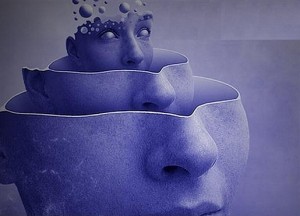 Yoga recognises the 5 Kleshas as 5 obstacles of the mind. These are traits that stand in the way in our pursuit for happiness. In the last newsletter I talked about the first klesha, Avidya or ignorance. We will now investigate the second Klesha, Asmita, which translates as the ego.
Yoga recognises the 5 Kleshas as 5 obstacles of the mind. These are traits that stand in the way in our pursuit for happiness. In the last newsletter I talked about the first klesha, Avidya or ignorance. We will now investigate the second Klesha, Asmita, which translates as the ego.
The mind is a complicated ‘organism’. ‘I think, therefore I am,’ is a quote made famous by French philosopher Descartes, but we cannot reverse this statement. It appears that we are sometimes not even in control of what we think. The mind has its own creative and compulsive tendencies. The ego or Asmita is such a creation of the mind. This ego suffers an ‘image problem’ in our society and surely too much ego is not a good thing, but we need some ego for motivation and drive so we can achieve our goals in life.
The constant chatter we have in our mind from the minute we wake up, is a product of Asmita. This chatter is mostly negative and involves doubt, worry and fear, which in turn causes suffering (dukha) in the form of anxiety, despair and/or depression.
How can we deal with the Asmita part of our ego in order to avoid dukha?
When observing our ‘inner chatter’, we can hear thoughts about how we perceive ourselves to be: ‘You are hopeless’ or ‘Wow, look at me!’ and ‘Do something else, this is boring..too difficult.’ or ‘I deserve something better’, or things like: “That is not going to work’, ‘It’s impossible’ or ‘This always happens to me!’. Asmita largely responsible for the bad perceptions of ourselves. I like to think of Asmita as our ‘inner drama queen’. If we take everything from Asmita on board, we experience dukha. And although Asmita is considered a part of the normal brain process, our practice is to rise above it.
For convenience, the yogis have divided the self in a higher self and lower self, whereby Asmita is part of the lower self and the Inner Observer, the higher self. So if
we appeal to our higher self and, we recognise the chatter of Asmita, we realise that we don’t need to take these comments too seriously. ‘Aha’, we notice,’ It’s the ego overdramatising things again.’ From the Inner Observer position we know that making mistakes is part of learning. Practice will bring us knowledge, ability and capabilty. We are all on this world to reach our full potential, on a journey that constantly needs to adapt to a changing itinerary. Our higher self is considered to be closer to the universal truth, as opposed to the lower self, which is closer to the perceived truth.
Just notice what you are saying to yourself during your practice.’Try harder…I can’t do this pose…I hate this…My arms are too short…I wish I was home in bed.’ In English we have the expression ‘to lose oneself in something’. In that instance Asmita is quiet, no more inner chatter. To lose yourself a pose or asana is possible by bringing yourself into the present moment. Once you stop doing something, but become one with what you are doing YOGA truly happens: your body mind and breath unite in a moment of stillness…bliss.
May the benefits of your practice stay with you and extend beyond you,
Namaste,
Ernestine

